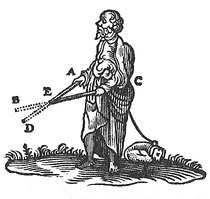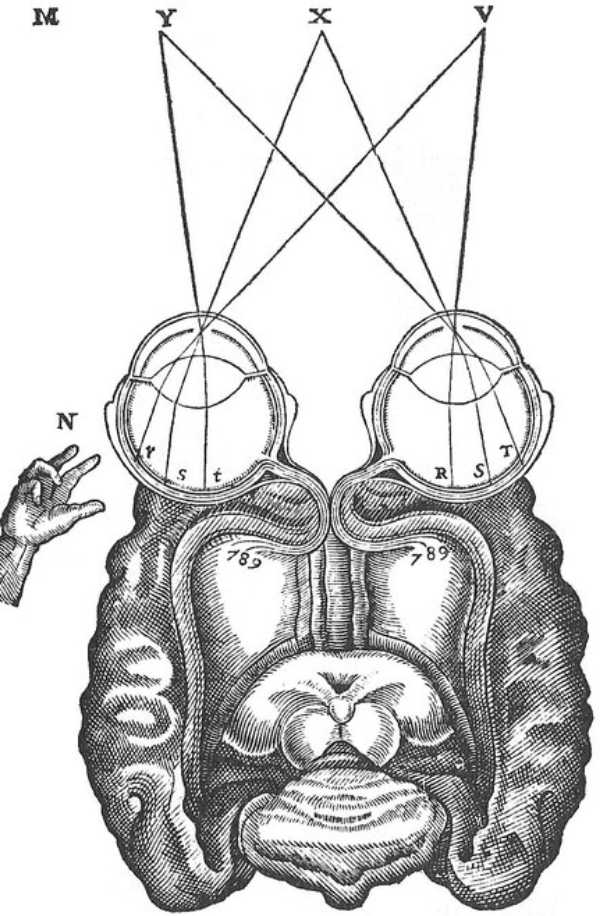The Shape of the Eye
Table of Contents
The eye’s shape must be a little different to make us see what is close to our eyes, than to make us see what is further away.
We change it to proportion it to the distance of the objects.
In doing so, we also change a certain part of our brain so that our soul can perceive this distance without us reflecting on it.
This is similar to how we grasp something with our hand and conform our hand to the size and shape of that thing.
- We feel it through our hand, without needing to think about its movements.
We know secondly the distance by the relationship between the two eyes.
The blind man holding the 2 sticks AE, CE.
He ignores their length I.
He knows only:
- the distance between his hands
AandC - the size of the angles
ACE,CAE
From these, as by a natural geometry, he can know where point E is.

So, when our two eyes RST and rst are turned towards X, the size of the line Ss, and that of the two angles XSs and XsS make us know where the point X is.

We can also do the same with the help of a single eye by making it change place.
- We look with both eyes at
X - We then close the left eye and see it through point
S - Then we immediately close the right eye and open the left at point
s
This will make the size of the line Ss and the 2 angles XSs and XsS come together in our imagination so that we can perceive the distance of point X.
- This is similar to how surveyors use 2 different stations to measure inaccessible places.
Another way of perceiving distance is by comparing at the same time:
- the distinctness or confusion of the shape
- the strength or weakness of the light.
While we stare at X, the rays coming from the objects 10 and 12 do not come together so exactly towards R and T at the bottom of our eye.

This is as if these objects were at the points V and Y. From there, we see that they are further away, or closer to us, than X.
The light from object 10 going into our eye is stronger than if that object were towards V.
- So we judge it to be closer.
The light coming from the object 12 is weaker than if it were towards Y.
- So we judge it to be farther.
Finally, we can estimate the distance of objects from:
- their size
- their location
- the distinctness of their figure and colours
When we look from afar at a body that we are used to see up close, we judge its distance much better than something that we have never seen.